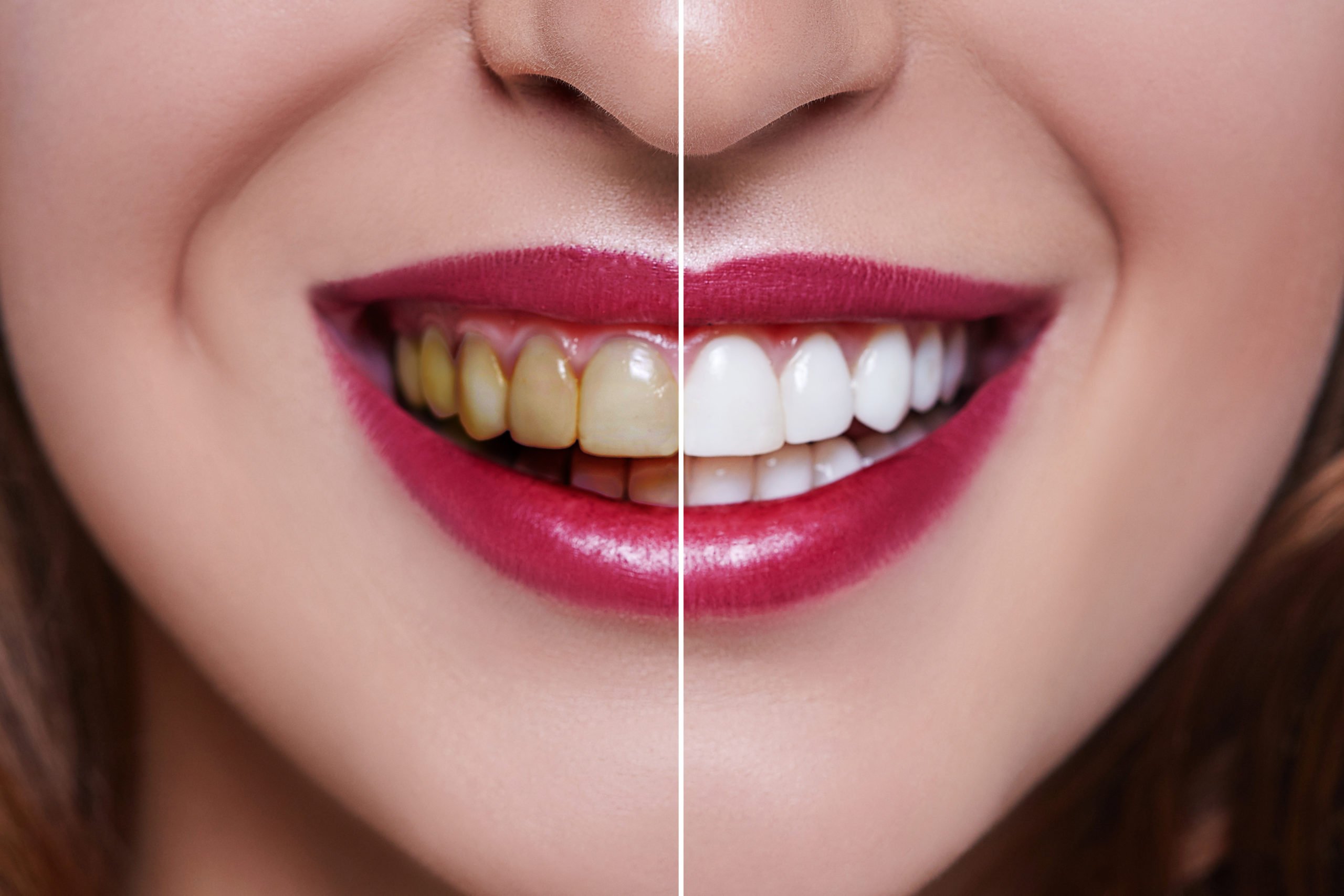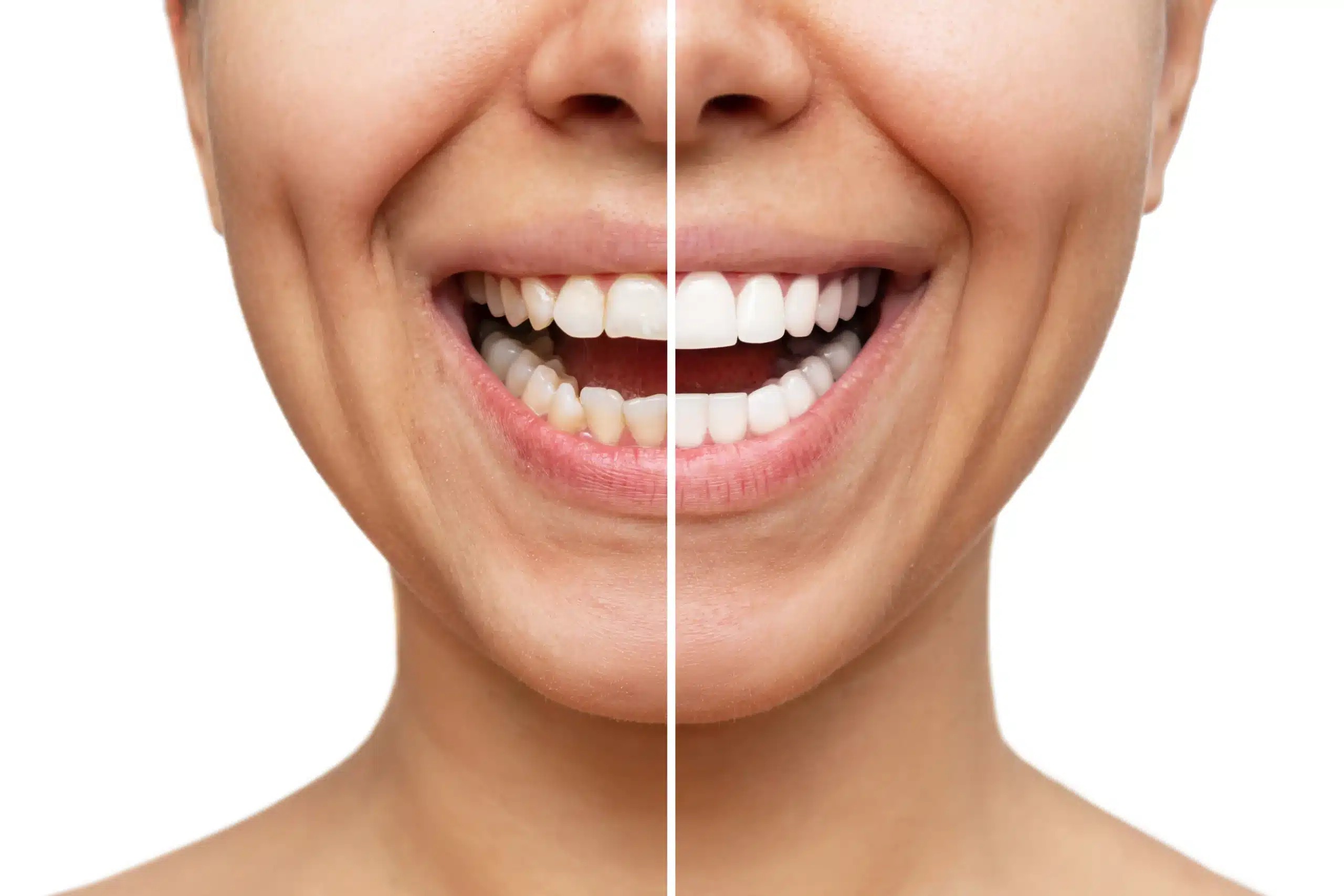Home>Finance>How Much Is A Full Set Of Veneers With Insurance?


Finance
How Much Is A Full Set Of Veneers With Insurance?
Published: November 18, 2023
Find out how much a full set of veneers with insurance costs and explore finance options. Achieve your dream smile without breaking the bank!
(Many of the links in this article redirect to a specific reviewed product. Your purchase of these products through affiliate links helps to generate commission for LiveWell, at no extra cost. Learn more)
Table of Contents
- Introduction
- Understanding Veneers and their Benefits
- Factors Affecting the Cost of Veneers
- The Role of Insurance in Covering Veneers
- Average Cost of a Full Set of Veneers
- How Insurance Coverage Works for Veneers
- Finding Insurance Plans that Cover Veneers
- Tips for Reducing the Cost of Veneers with Insurance
- Conclusion
Introduction
Welcome to the world of dental aesthetics, where you can transform your smile and boost your confidence with the help of veneers. Veneers are a popular cosmetic dental procedure that can correct various dental imperfections, such as chipped or discolored teeth, gaps between teeth, or misaligned teeth.
In this article, we will delve into the cost of getting a full set of veneers with insurance coverage. Whether you’re considering veneers for purely cosmetic reasons or for functional purposes, it’s essential to understand the financial implications involved.
Veneers are ultra-thin, custom-made shells made of porcelain or composite resin that are bonded to the front surface of your teeth. They are designed to mimic the natural appearance of teeth, providing a seamless and attractive smile. While veneers offer numerous benefits, including durability and stain resistance, one aspect that often crosses people’s minds is the cost.
The cost of veneers can vary based on several factors, including the material used, the complexity of the case, the reputation of the dentist, and even the location of the dental practice. Insurance coverage can also play a crucial role in determining the overall cost.
In the following sections, we will explore the factors that influence the cost of veneers, the role of insurance coverage, the average cost of a full set of veneers, tips for reducing the cost with insurance, and where to find insurance plans that cover veneers. Let’s dive in!
Understanding Veneers and their Benefits
Veneers are a versatile and popular cosmetic dental treatment that can enhance your smile and improve your overall dental appearance. These thin shells, typically made of porcelain or composite resin, are custom-made to fit over the front surface of your teeth. Veneers are designed to look natural, blending seamlessly with the rest of your teeth, and can address a range of cosmetic dental concerns.
One of the primary benefits of veneers is their ability to transform the appearance of your teeth. If you have chipped, stained, or unevenly spaced teeth, veneers can provide a solution to these aesthetic issues. They can also be used to lengthen or reshape teeth, providing a more harmonious and symmetrical smile. Veneers can even help to correct minor misalignments or irregularities in tooth shape or size.
Another advantage of veneers is their durability. With proper care and maintenance, veneers can last for many years. Porcelain veneers, in particular, are highly resistant to stains and discoloration, allowing you to enjoy a bright and vibrant smile. Additionally, veneers are less invasive than other dental procedures, such as crowns or braces, making them a popular choice among individuals seeking a minimally invasive solution for their cosmetic dental concerns.
Veneers can also provide a boost to your self-esteem and confidence. If you have been self-conscious about the appearance of your teeth, veneers can dramatically improve your smile and give you the confidence to show it off. This can have a positive impact on various aspects of your life, including your personal relationships and professional interactions.
It’s important to note that while veneers offer significant cosmetic benefits, they are not suitable for everyone. Your dentist will assess your dental health and discuss whether veneers are the right option for you. In some cases, alternative treatments, such as teeth whitening or orthodontic procedures, may be recommended.
Now that we have explored the benefits of veneers, let’s move on to understanding the factors that can affect the cost of getting a full set of veneers, including the material used, complexity of the case, and more.
Factors Affecting the Cost of Veneers
The cost of getting veneers can vary significantly based on several factors. It’s essential to understand these factors so that you can have a realistic expectation of the expenses involved. Here are some key factors that can affect the cost of veneers:
- Material: The choice of material for your veneers can greatly impact the cost. Porcelain veneers are typically more expensive than composite resin veneers due to their superior aesthetic benefits and longevity. Porcelain veneers are custom-made in a dental laboratory, which adds to their cost.
- Number of veneers: The number of veneers you need will affect the overall cost. Some individuals may only require veneers for a few teeth, while others may need a full set of veneers to achieve the desired aesthetic result.
- Complexity of the case: The complexity of your dental case can influence the cost. If you have more severe dental issues that require additional steps or procedures, such as tooth preparation or gum contouring, the overall cost may increase. Likewise, if you have specific dental concerns like significant tooth misalignment or deep discoloration, additional treatments may be needed before veneers can be applied.
- Geographical location: The cost of veneers can also vary depending on the location of the dental practice. Dental fees can differ between urban and rural areas, as well as between countries. Dental practices located in metropolitan areas tend to have higher overhead costs, which may be reflected in their pricing.
- Dentist’s experience and reputation: The expertise and reputation of the dentist can impact the cost of veneers. Experienced and highly skilled dentists who have a track record of successful veneer procedures may charge higher fees for their services.
It’s important to discuss these factors with your dentist during your initial consultation to get a more accurate estimate of the cost. In the next section, we will explore the role of insurance in covering the cost of veneers and how it can help to mitigate the expenses.
The Role of Insurance in Covering Veneers
Insurance coverage can play a crucial role in offsetting the cost of veneers, but it’s important to understand that not all insurance plans cover cosmetic dental procedures. Most dental insurance plans focus on providing coverage for preventive care, such as regular check-ups, cleanings, and basic dental treatments, rather than elective cosmetic procedures like veneers.
However, there are instances where insurance may partially cover the cost of veneers. This typically occurs when there are underlying dental issues that require treatment, and veneers are deemed necessary for functional or restorative reasons rather than purely cosmetic purposes. For example, if you have teeth with significant decay, damage, or structural issues, insurance may cover a portion of the cost of veneers as part of a comprehensive treatment plan to restore dental health.
It’s important to note that insurance coverage for veneers can vary widely depending on your specific plan and provider. Some insurance plans may offer limited coverage for cosmetic procedures, while others may have exclusions. It’s crucial to thoroughly review your insurance policy or consult with your insurance provider to understand the extent of coverage for veneers.
If your insurance plan does not cover veneers or offers limited coverage, you may consider alternative options, such as dental discount plans or flexible spending accounts (FSAs) or health savings accounts (HSAs). These options can help you save on dental expenses by offering discounted rates or allowing you to set aside pre-tax dollars for dental treatments.
In the following sections, we will delve into the average cost of a full set of veneers, how insurance coverage works for veneers, tips for reducing the cost of veneers with insurance, and where to find insurance plans that cover veneers. Let’s explore further!
Average Cost of a Full Set of Veneers
The cost of a full set of veneers can vary depending on several factors, including the number of veneers needed, the material used, the complexity of the case, and the location of the dental practice. On average, the cost of a full set of veneers can range from $10,000 to $30,000. However, it’s essential to note that these figures are approximate and can differ based on individual circumstances.
The number of veneers needed for a full set can vary based on the individual’s dental condition and desired outcome. Some individuals may require veneers for all of their visible teeth, while others may only need them for the front teeth, also known as the “smile zone.”
The material used for the veneers also affects the cost. Porcelain veneers are generally more expensive than composite resin veneers due to their superior durability, stain resistance, and aesthetic qualities. Porcelain veneers are custom-made in a dental laboratory, which adds to their cost.
The complexity of the case and any additional treatments required will also impact the overall cost. If the individual has underlying dental issues that need to be addressed, such as tooth decay or gum disease, those treatments will need to be factored into the overall cost alongside the veneers.
Geographical location is another factor that influences the cost. Dental fees can vary significantly between regions and countries. Dental practices located in metropolitan areas or areas with a higher cost of living generally have higher fees compared to those in rural or less affluent areas.
It’s important to consult with your dentist for an accurate estimate of the cost of a full set of veneers. They will evaluate your specific dental condition, discuss the treatment plan, and provide you with a personalized cost estimate. Additionally, dental financing options may be available to help make the cost of veneers more manageable, spreading it out over a period of time.
Now that we have a better understanding of the average cost of veneers, let’s explore how insurance coverage works for veneers and what you can do to reduce the cost of veneers with insurance.
How Insurance Coverage Works for Veneers
Insurance coverage for veneers can vary depending on the specific insurance plan and provider. As mentioned earlier, most dental insurance plans focus on preventive care and basic dental treatments rather than elective cosmetic procedures like veneers. However, there are cases where insurance may provide partial coverage for veneers if they are deemed medically necessary.
When it comes to insurance coverage for veneers, it’s important to understand the distinction between cosmetic and functional/restorative reasons. Insurance plans typically do not cover purely cosmetic procedures. However, if the veneers are deemed necessary to restore dental health or function, separate from cosmetic enhancement, there may be coverage available.
In cases where veneers are part of a comprehensive treatment plan to address underlying dental issues such as decay, damage, or structural problems, insurance may cover a portion of the cost. For example, if veneers are necessary to restore proper bite alignment or to protect weakened teeth, insurance may provide coverage under those circumstances.
It’s crucial to review your insurance policy or consult with your insurance provider to understand the specifics of your coverage for veneers. Some insurance plans may have limitations or exclusions for cosmetic procedures, while others may offer more comprehensive coverage for restorative purposes.
It’s important to note that even if insurance partially covers the cost of veneers, there may still be out-of-pocket expenses. These expenses can include deductibles, copayments, or any portion of the cost that exceeds the coverage limit set by the insurance plan.
Prior to undergoing any dental treatment, including veneers, it’s always recommended to contact your insurance provider to confirm coverage and to understand any pre-authorization requirements or documentation that may be needed.
Now that we have explored how insurance coverage for veneers works, let’s move on to discussing strategies for reducing the cost of veneers with insurance.
Finding Insurance Plans that Cover Veneers
Finding insurance plans that cover veneers can be a bit challenging, as most dental insurance plans have limitations when it comes to cosmetic dental procedures. However, there are some steps you can take to explore your options:
- Research different insurance providers: Start by researching different dental insurance providers and their offered plans. Look for plans that have more comprehensive coverage for cosmetic procedures or allow for coverage of medically necessary veneers.
- Check plan coverage: Once you have identified potential insurance providers, review the details of their plans to see if veneers are covered. Carefully read through the policy documents or contact the insurance companies directly to inquire about their coverage for veneers.
- Speak with employer-provided insurance: If you have dental insurance through your employer, reach out to your human resources department or the insurance provider to inquire about coverage for veneers. They may have information about specific plans or supplemental coverage options that could offer coverage for cosmetic dental procedures.
- Consider cosmetic dentistry-focused insurance: Some insurance providers specialize in cosmetic dentistry coverage. While these plans may have higher premiums or limited network options, they may provide more comprehensive coverage for veneers. Research and compare these specific plans to determine if they align with your needs and budget.
- Consult with a dental professional: Your dentist can also provide guidance on finding insurance plans that cover veneers. They may have experience working with specific insurance providers or knowledge of plans that offer coverage for cosmetic procedures. They can help you navigate the process and provide recommendations based on your specific situation.
Remember, finding insurance plans that cover veneers can be challenging, and it’s important to carefully review the details and limitations of any policy you consider. It’s also worth noting that even with insurance coverage, there may still be out-of-pocket costs involved.
In the next section, we will explore tips for reducing the cost of veneers with insurance, allowing you to make the most of your coverage and potentially lower your expenses.
Tips for Reducing the Cost of Veneers with Insurance
While insurance coverage for veneers may not fully cover the cost, there are several tips you can keep in mind to help reduce your expenses. Consider the following strategies:
- Choose an in-network dentist: Insurance plans often have a network of preferred providers who have agreed to discounted rates. Choosing an in-network dentist can help lower your out-of-pocket expenses for veneers.
- Explore alternative treatments: Discuss alternative treatment options with your dentist. In some cases, there may be less expensive alternatives to veneers that can still provide satisfactory cosmetic results. For example, teeth whitening or dental bonding may be more cost-effective options.
- Maximize insurance coverage: Understand the details of your insurance coverage and take advantage of the benefits it offers. Schedule regular dental check-ups to maintain good oral health and catch any underlying issues early on. This can help you avoid more extensive treatments in the long run.
- Consider a phased approach: If getting a full set of veneers is financially challenging, discuss with your dentist the possibility of phasing the treatment. You can start with veneers on the most visible teeth and gradually add more over time as your budget allows.
- Utilize dental savings plans: Dental savings plans, also known as discount dental plans, can provide savings on various dental procedures, including veneers. These plans offer discounted rates at participating dental providers and can be a cost-effective option for reducing the overall cost of veneers.
- Discuss payment plans or financing options: Many dental practices offer flexible payment plans or financing options to help manage the cost of veneers. Inquire about these options and explore what works best for your budget. Some options may include interest-free installment plans or third-party financing companies.
It’s important to remember that each individual’s insurance coverage and financial situation may vary. Ensure to thoroughly research and discuss these strategies with your dentist and insurance provider to determine the best course of action for reducing the cost of veneers.
Now that we have explored various strategies for reducing the cost of veneers with insurance, let’s conclude our discussion.
Conclusion
Veneers are a popular cosmetic dental procedure that can transform your smile and boost your confidence. While the cost of getting a full set of veneers can vary based on various factors, insurance coverage can play a significant role in offsetting the expenses. However, it’s important to note that insurance plans typically focus on preventive and basic dental care, and coverage for veneers may be limited or vary between providers.
Understanding the factors that influence the cost of veneers, such as the material used, the number of veneers needed, the complexity of the case, and the geographical location, can help you estimate the potential expenses. Additionally, knowing how insurance coverage works for veneers is crucial in managing your expectations and exploring alternative options for coverage.
While finding insurance plans that cover veneers can be challenging, conducting thorough research, consulting with dental professionals, and exploring specialized cosmetic dentistry insurance providers can increase your chances of finding coverage or supplemental options.
If insurance coverage is limited, there are strategies to help reduce the cost of veneers, such as choosing an in-network dentist, exploring alternative treatments, maximizing insurance benefits, considering a phased approach, utilizing dental savings plans, and discussing payment plans or financing options.
Ultimately, it’s crucial to consult with your dentist, review your insurance policy, and discuss your specific situation with your insurance provider to fully understand the costs and coverage for veneers.
Remember, investing in your smile can have a significant impact on your self-confidence and overall well-being. With careful planning and research, you can achieve the smile of your dreams while managing the cost of veneers with insurance coverage and other cost-saving strategies.














